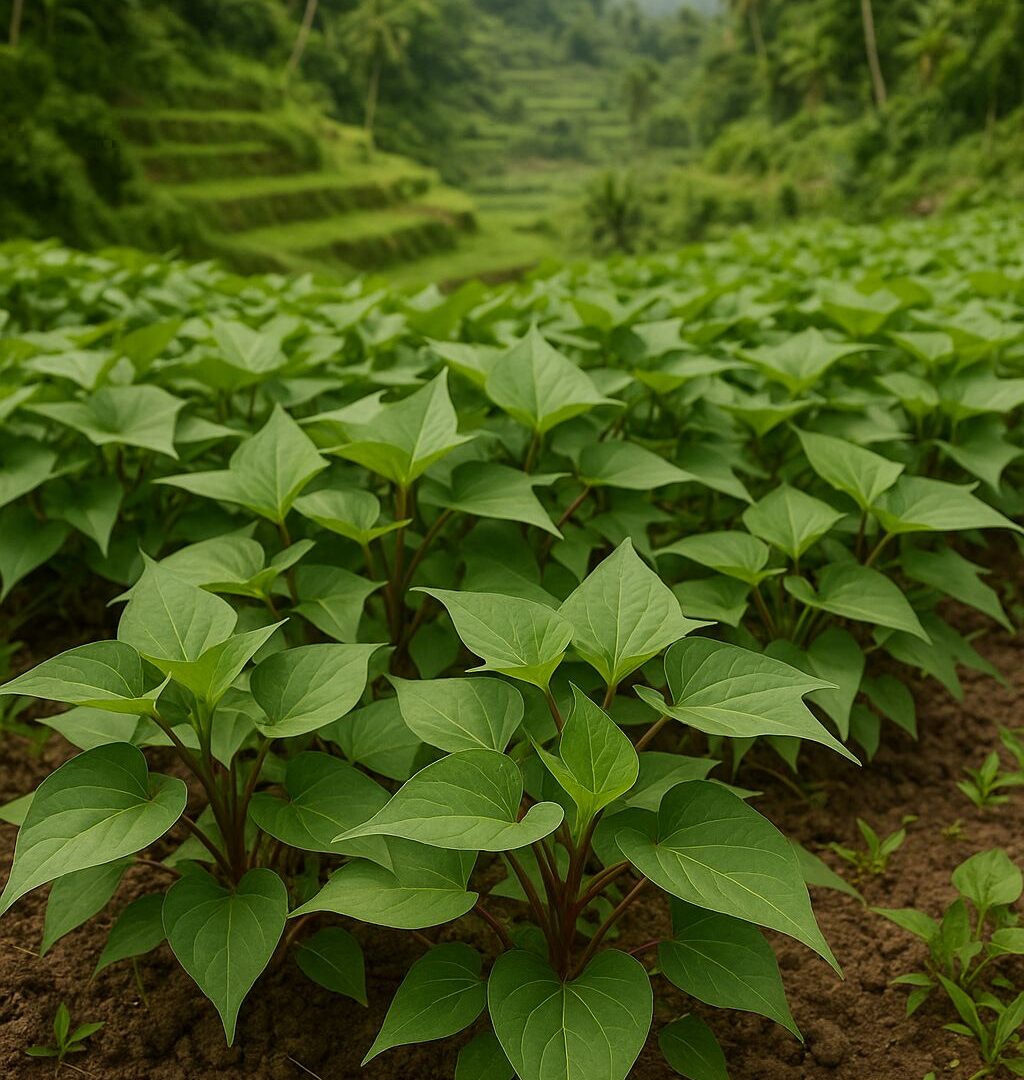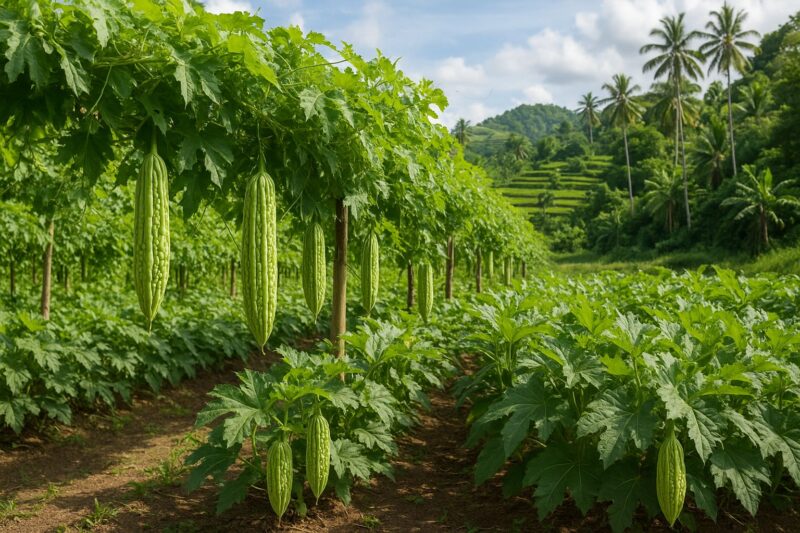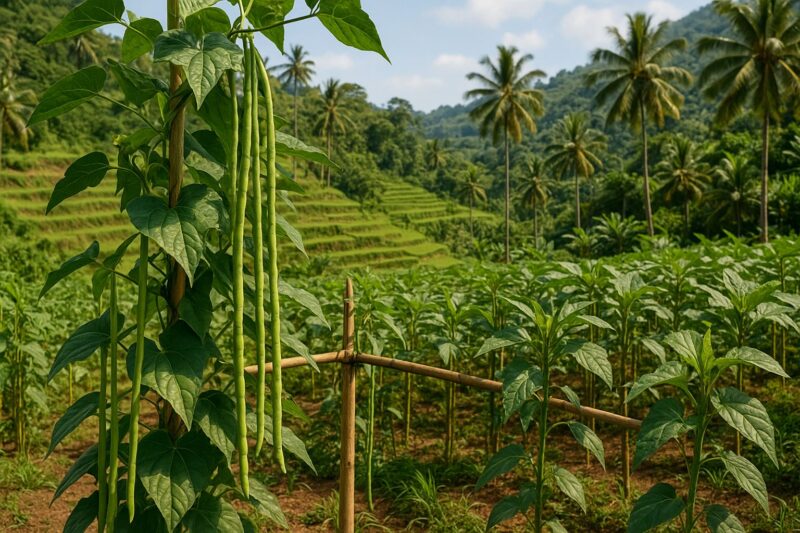Sweet potato leaves—talbos ng kamote—offer a nutritious, fast-growing green that graces many Filipino tables, from simple sautéed dishes in Batangas to creamy soups in Quezon Province. Unlike the starchy tubers, these tender young leaves emerge just weeks after planting and can be harvested repeatedly, making them ideal for home gardens and small farms alike. Yet, cultivating a dependable supply of fresh talbos requires attention to variety selection, soil health, watering, and pest vigilance. After several seasons tending vines in Bulacan—and learning from growers in Cavite, Iloilo, and even rooftop gardeners in Manila—I’ve honed a routine that keeps greens coming for months. Here’s what I’ve discovered.
Variety matters. Traditional white-fleshed sweet potatoes produce mild-flavored leaves, while purple-fleshed varieties yield darker, slightly more robust greens. In lowland areas like Bulacan and Pampanga, the white type grows vigorously even during our hottest months. Upland gardeners in Bukidnon and Benguet often opt for purple varieties, as they tolerate cooler nights and fetch premium prices at city markets. I plant both, alternating beds so I can offer a mix of tender, pale leaves and richly hued greens for salads and stir-fries.
Soil preparation sets the foundation. Sweet potato vines thrive in loose, well-draining soil rich in organic matter. In clay-heavy plots, I blend in two wheelbarrows of homemade compost and a handful of rice hull charcoal per ten square meters to improve aeration. Sandy soils, common along coastal Iloilo and Leyte, benefit from added coconut coir or well-rotted goat manure to boost water retention. A soil pH between 5.5 and 6.5 suits most varieties; if your soil tests more acidic, a light dressing of agricultural lime brings it closer to neutral.
Propagation is simple. Take healthy vine cuttings—each about thirty centimeters long—with at least four nodes. Strip lower leaves, then plant horizontally in furrows ten centimeters deep, spacing cuttings thirty centimeters apart. Cover lightly with soil, firm gently, and water in. In Bulacan’s early dry season (March–April), I start cuttings under shade cloth to protect them from scorching sun, then move them to full sunlight once they show new growth.
Watering demands consistency. Young vines need even moisture to root quickly, but standing water invites rot. I water deeply every morning—so soil remains moist down to twenty centimeters—then allow surfaces to dry by afternoon. Mulching with rice straw conserves moisture, suppresses weeds, and gradually enriches the soil. In containers or raised beds—common in urban rooftop gardens—I water daily during dry spells, checking by feel that soil crumbles loosely rather than clumps.
Feeding keeps leaves lush. At planting, I apply a light side-dressing of compost in the furrow. Four weeks in, when vines begin to ramble, I side-dress every meter with decomposed chicken manure or compost tea, focusing beyond the vine’s drip line. Keep nitrogen moderate—too much can invite aphids—so I balance with potash via a sprinkle of wood ash or banana-stalk compost around the same area.
Sunlight and shade balance influences tenderness. Too much direct midday sun can toughen leaves; too little light leads to leggy vines and sparse foliage. I aim for at least four hours of direct morning sun, then partial shade under coconut palms or taller crops like corn. On balconies or patios in Metro Manila, I position containers east-facing to capture gentle rays and avoid harsh afternoon glare.
Pest vigilance is key. Aphids and whiteflies cluster on new shoots; I scout weekly, knocking them off with a water spray or applying a mild garlic-soap infusion. Snails nibble tender leaves—especially after rains—so I patrol at dawn, handpicking and relocating them. Occasional fungal spots call for pruning affected leaves and improving airflow by spacing vines at least thirty centimeters apart.
Harvest begins as soon as vines reach sixty centimeters long—usually four to six weeks after planting. Snip entire stems just above the third node for tender shoots or pinch outer leaves for a “cut-and-come-again” harvest that encourages fresh growth. Frequent harvesting—every five to seven days—sustains production for three to four months, sometimes longer under optimal care.
One memorable season in Bulacan, I intercropped sweet potatoes with okra, letting vines sprawl beneath taller okra stalks. The slight shade kept leaves tender, and supplementary drip irrigation maintained moisture. That small experiment doubled my greens yield and inspired neighbors in our barangay to try mixed beds.
Whether you plant sprawling rows in upland terraces or containers on urban rooftops, mastering soil health, consistent moisture, balanced feeding, light management, and simple pest checks will bring you a steady supply of nutritious talbos ng kamote across the Philippines. In every handful of glossy leaves lies not just vitamins but the satisfaction of a garden that keeps on giving.
I’m open for consulting and speaking opportunities on sustainable vegetable production and urban agriculture nationwide. Let’s grow together.
#TalbosNgKamote #SweetPotatoLeaves #PhilippineFarming #SustainableAgriculture #UrbanGardening #ConsultingAvailable #SpeakingOpportunities




